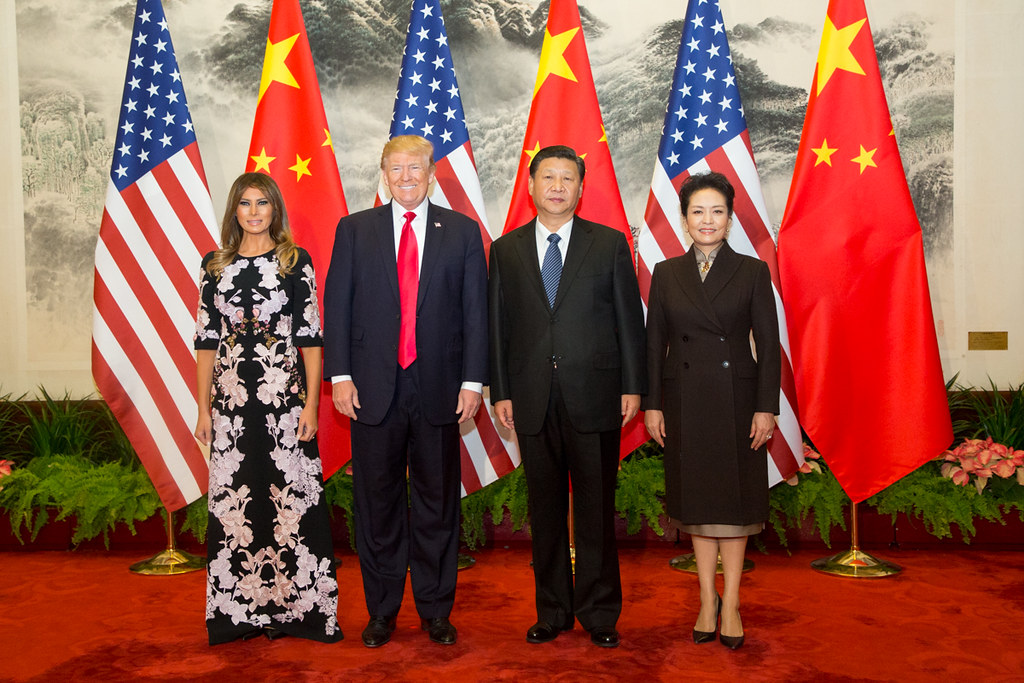Commentary by:

Executive Director & Senior Fellow
Cover Image: UnSplash
The new US National Defence Strategy, announced on January 19, kicked off a fresh round of speculation on US-China relations. The new strategy must be viewed in conjunction with the US National Security Strategy, announced in December, and the “Indo-Pacific” concept raised frequently by US President Donald Trump during his visit to Asia in November – and repeatedly echoed by his foreign policy team. All of this seems to suggest, at least from the US perspective, that American policy towards China has reached a transition point, from “engagement with competition” during previous US administrations to “competition with possible confrontation”. This frustrated and negative assessment seems to diverge greatly from the more optimistic Chinese view of the trajectory of the important bilateral relationship, especially after China’s 19th National Congress last October and Trump’s state visit to China in November.
Issues such as North Korea’s nuclear tests, trade and economic relations, and strategic competition in Asia’s maritime domain have posed critical challenges to the leaders of both countries, reminding us again of the importance of communication and trust. Trump’s visit to China was reported by the Chinese media as an opportunity to boost Sino-US relations, partly through stable and increasing personal ties between Chinese President Xi Jinping and Trump. On the other hand, many American analysts saw Trump’s visit as a victory for Chinese foreign policy and a loss for the United States. Although Trump’s visit to Asia covered many of the hot issues mentioned above, the perception of analysts in the two countries diverged sharply.
The North Korean nuclear crisis and its aftermath has become the No 1 test of US-China relations. There is a consensus among Chinese and US scholars that the crisis affects international security, regional stability and relations between the major powers. It has also been highlighted that the US is willing to consider a preventive war with North Korea as a means of denuclearising the Korean peninsula, which puts China in a difficult position. The fundamental interests of the US and China are not aligned on this issue – the US is happy to squeeze North Korea with military threats and sanctions to the point of collapse, but a chaotic North Korea would be a disaster for China, which stills holds out hope that the crisis can be resolved without war.
The Trump administration hasn’t fully grappled with the human and material costs of a preventive strike on North Korea. There is great uncertainty as to where the country’s nuclear assets are stored and a preventive strike would, at best, eliminate a fraction of that capability. Pyongyang’s reprisals thereafter and the outbreak of war could lead to massive casualties.
There was a wide consensus that American leadership in Asia and its broader interests in the Asia-Pacific region would suffer lasting damage because of Trump’s mercantilist stance and “America First” economic policy. Such policies are incompatible with the trend of globalisation, which is market-driven and not possible to arrest.
Some Chinese analysts hold that China’s engagement with the US is likely to receive a positive boost in light of the outcomes of the 19th party congress, at which President Xi reiterated his intention of promoting economic and structural reforms and further opening the Chinese economy to global market forces. This market opening holds out a useful opportunity to further deepen US-China ties and address the criticism directed against China by the US business sector – hitherto China’s most vocal backer – that the playing field is tilted in favour of domestic competitors at the expense of US companies in China. Unfortunately, this optimism in China is not shared in the US.
In 2018, the status quo in the South China Sea will be maintained. Important steps were taken towards laying the groundwork for managing these disputes in 2016 and 2017, but any new progress is likely to be slow and reflect changes to the rules of the game that have already been made. The South China Sea issue has taken a back seat to other more immediate concerns, such as the crisis on the Korean peninsula.
However, this does not mean it will go away. The increasing geopolitical competition between China and the US will set the stage for and influence the disputes in the South China Sea. The US navy is likely to conduct freedom of navigation operations more frequently in the South China Sea in 2018. Meanwhile, due to the enhanced capabilities of its navy and recently developed facilities and deployments on some of its South China Sea islands, China will be able to command more effective countermeasures against American military activities in these waters.
National rejuvenation, building China into a great, modern socialist country, and realising the “Chinese dream” were signature themes that were reiterated at the 19th party congress. Growth, development and the well-being of the Chinese people will remain the overwhelming focus of the Chinese government and is linked to the greater well-being of the world at large.
As the world’s second-largest economy, China needs a predictable and stable strategic environment and has therefore proposed a new system of “major country diplomacy with Chinese characteristics” so that outdated zero-sum hegemonic competitive mentalities can be abandoned. The US, however, did not read such a benign message and instead pointed to contradictions in China’s rhetoric at the 19th party congress. China should communicate in a language that is more easily accessible to its peers – otherwise, the communication will continue to remain one-sided and fruitless.

Recent criticism of “Chinese influence” will also add to the complex dynamic between the two countries. At a roundtable discussion in early January in Washington, some American analysts voiced concern that there is increasing dissatisfaction with the status quo of US-China relations among key US interest groups – labour/manufacturing, the security community, civil society and the China expert community. An example is the University of Texas’ rejection of funding from the China-US Exchange Foundation, a Hong Kong-based organisation that US senator Ted Cruz said “helps spread Chinese government propaganda abroad”.
That suspicion was also targeted at Johns Hopkins University, which received funding from the same foundation, although the university clarified that the money came with “absolutely no conditions or limitations”. It will not be surprising to hear of similar stories in the future, which will eventually damage the cultural, educational and people-to-people engagement that helps maintain bilateral relations even in difficult political environments.
The US seems overwhelmingly pessimistic while China shows extreme optimism about their relationship. This perception gap is driven partially by the respective narratives of each other’s national interests, which give more weight to “competition” than “cooperation” on global and regional security, and partially by domestic issues.

The perception gap that has emerged will continue and possibly deepen in 2018, unless the trust deficit is mended through more dialogue and confidence building measures at various levels – from state leaders to different sectors, including security, the military, economy, law enforcement, culture, education, civil society and people-to-people engagement, among others.
This article originally appeared in the South China Morning Post.

The Institute for China-America Studies is an independent nonprofit, nonpartisan research organization dedicated to strengthening the understanding of U.S.-China relations through expert analysis and practical policy solutions.
1919 M St. NW Suite 310,
Washington, DC 20036
icas@chinaus-icas.org
(202) 968-0595
© 2025 INSTITUTE FOR CHINA-AMERICA STUDIES. ALL RIGHTS RESERVED.
Global Times Interview: Implementing unilateral economic rules will ultimately harm the US itself